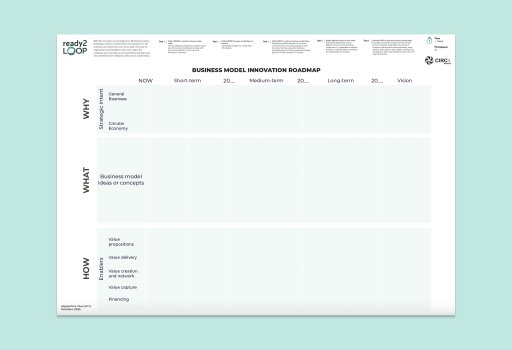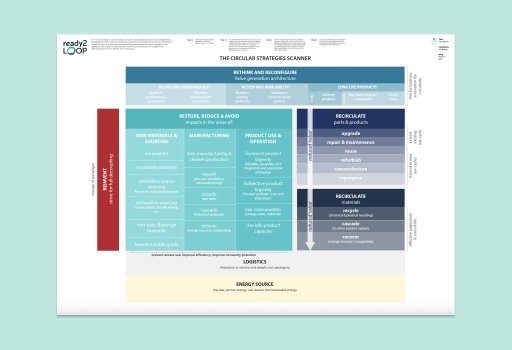Exploring circularity of small consumer electronics with a take-back system.
"The Accelerator programme has helped us understand our current position within circularity and increased our understanding of how a product can become circular.
We have already started working on increasing the sustainability of our products in Demant, and this initiative fits very well together with these ambitions." - Thor Højlund Olsen, Director of Discovery, Demant

Opportunity
Demant wants to investigate circular strategies and whether a new circular take-back model would be a possible starting point for a CE transition for Demant, which operates in a product sector with undiscovered CE potential. This could aid the company’s ambitious net-zero emissions target in 2050 while generating new revenue streams, keeping the material value in the loop, and securing compliance with upcoming legislation.
Path
The ready2loop readiness assessment revealed strengths and opportunities, and analysing these data helped to identify and prioritise the opportunity areas to continue working with. The 'synthesis tools' were selected to help develop and set up a take-back system. The transition path is suggested to start with an in-depth analysis of suitable business models that can ensure that Demant has an achievable starting point.
Outcome
Exploring the introduction of a take-back system for the Oticon SmartChargers value recovery marks the investigation's initial phase. A significant result of this effort is Demant's improved understanding of the current state of the CE and the strategic design principles essential for promoting circularity in their upcoming products. Noteworthy is the inclusion of a roadmap for the take-back system, incorporating suggested circularity goals aimed at propelling the advancement of a CE.
Context
Demant is the mother company for multiple product manufacturing companies within the hearing healthcare and audio technology industries, including the 120-year-old world-renowned hearing healthcare brand Oticon.
The company has already taken environmental actions, such as reducing the carbon footprint of packaging and prioritizing renewable energy for its production within scope 1. Demant is committed to increasing its sustainability effort further by investigating circular economy (CE) and its opportunities.
Demant actively works with sustainability and has set an ambitious target to reach net zero by 2050. Scope 3 accounted for 95% of the group's total emissions in 2022. Making their products circular could significantly contribute to DeDemant'soals. This Accelerator programme has focused on how one of Oticon's best-selling products, the Oticon SmartCharger, can become circular.
Opportunity
In collaboration with Demant, the team investigated circular strategies to explore new ways to close the loop of the Oticon SmartCharger. Opportunities were discovered in the charger's end-of-use stage and packaging during its life cycle. Demant focuses on packaging, whereas initiatives for end-of-life products are limited. Seizing value from outlived products will generate new value streams while enabling proper material management through a take-back system. This would aid Demant in reaching its net-zero emission target and still account for upcoming legislation.
The aim of the Transition Path was to define a starting point for Demant to shift towards circularity, which would be tangible for a company in a product sector with undiscovered CE potential. The success of such an initial project could lead to more initiatives in the future for Demant's product portfolio, helping Demant become a first mover on circularity within the industries.
Transition path
The first stop on the CE Transition Path for Demant regarding the charger was the ready2loop readiness assessment, which revealed strengths and many exciting opportunities. Demant and the student team assigned to the project completed the questionnaire.
It was decided to focus on opportunities instead of strengths, as this would improve organisational understanding of new circular business areas. The analysis tools' findings showed that the "Take-back & End-of-Life Strategies" and the "Strategy & Business Model Innovation" were high-potential areas. They are believed to be both "must-have" areas and should be implemented in the near future.
Two synthesis tools were selected to develop actions that align with the chosen dimensions, which could incorporate both focus areas. The tool "The roadmap to circularity" was used to explore activities along the CE transition path. This included the recommendation of a companywide strategy which aligns with the current and upcoming trends in the European market. The focus was centred around a take-back strategy to achieve a circular Oticon Smart Charger, including a pilot project for which the necessary activities were mapped. The second tool, "Circular Economy Business Model Framework", was used for a distinguished examination of the take-back program, which could ensure that the pilot project would result in an achievable business model. Both tools would give Demant a valuable starting point for their overall CE transition, aligning with Demant's request for a long-term strategy.
Outcome
The Transition Path has assisted Demant in exploring ways to make their Oticon SmartCharger more circular. This involved pinpointing short-term and long-term improvement areas, establishing Circular Economy goals, and formulating a roadmap for Demant’s Circular Economy journey. The initial phase of the roadmap proposes a trial run of a take-back system, where an external entity oversees the value recovery operations. Following the trial, the outcomes will be evaluated, and decisions will be made on how to proceed or build in-house capabilities.
Furthermore, throughout the project, Demant has acquired insights into current affairs that will be applicable to future projects. This newfound understanding, particularly in integrating circularity into the designs of upcoming versions and products, will play a vital role in shaping future initiatives.
Reflections
Demant’s representatives were motivated and eager to explore potential opportunities with student teams. In addition to investing substantial time into meetings, physical products were given to the teams to enhance understanding, thus leading to tangible outcomes. Throughout the collaboration, Demant maintained a reasonable, honest, and open approach, which resulted in affirmative reactions from them at the last meeting regarding the proposed circularity strategies.
Next step
Demant's next step is to mature the concept of integrating circularity into its product designs and business model. This can be done by following the recommendations showcased in the "Roadmap towards Circularity," which can help form the outline for a pilot project. A plan for the take-back system could be to introduce external strategic partners in the early stages. If the project succeeds, internal resources could be allocated, and the project can be scaled up.
Micro-Accelerator. January 2024 - offered by ready2LOOP & DTU Course, Design for Circular Economy
Company
Oticon A/S








